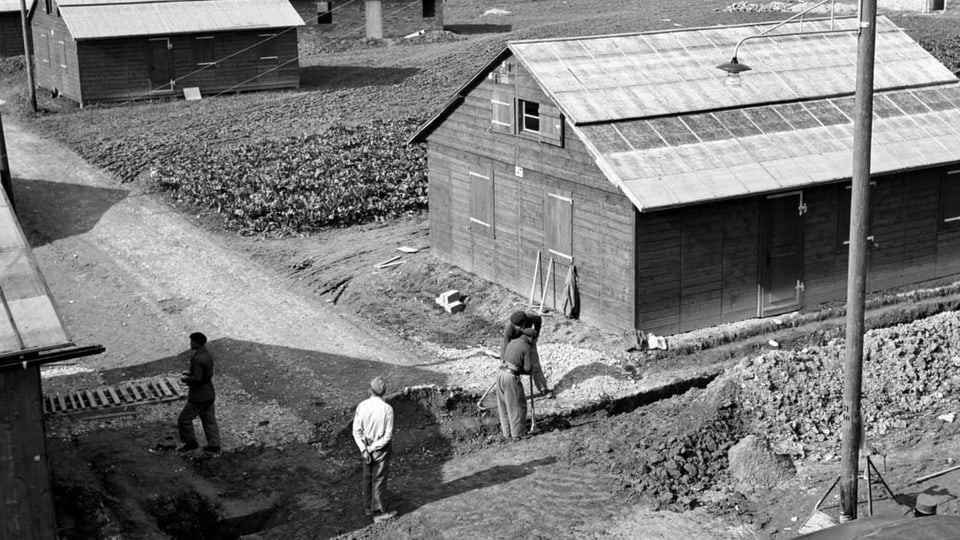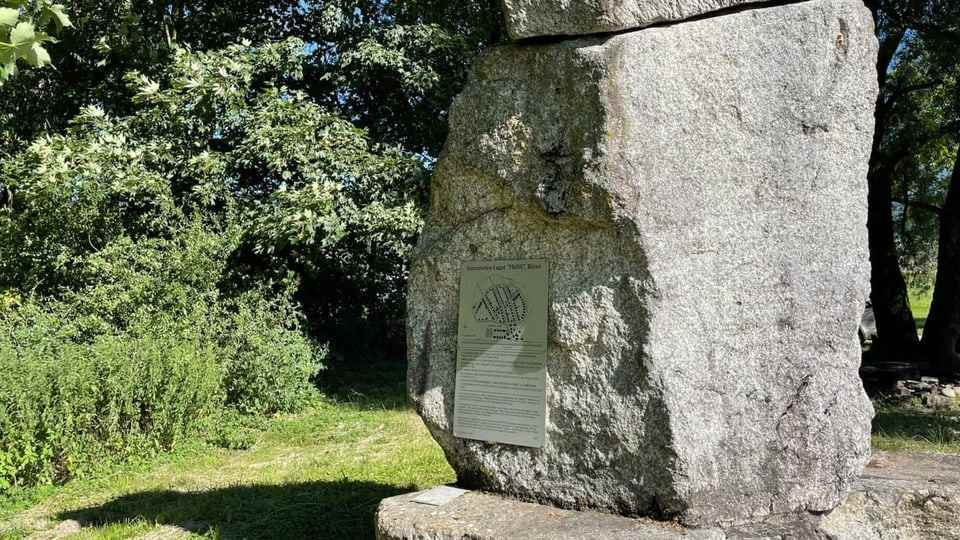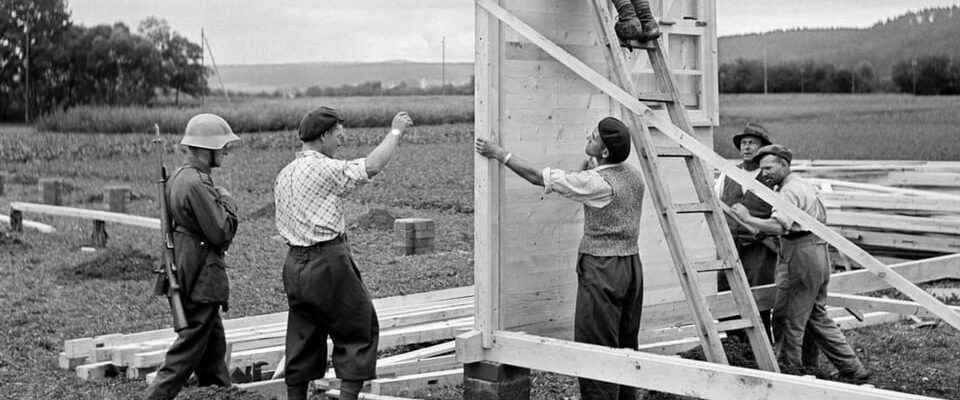contents
The descendants of interned soldiers of the Polish army want to save the only remaining building in Büren an der Aare from decay. The owners lock themselves.
What remains is a shed with a cracked facade, a decayed roof and a crumbling chimney. The dilapidated building on a field in Büren an der Aare is the last visible witness of the former internment camp. Where there is now a green, freshly mown meadow, there were over 120 buildings during World War II. Built from scratch within a few months, Polish soldiers were housed and guarded here between 1940 and 1942.
Legend:
Interned soldiers from Poland build barracks for the camp in Büren an der Aare in August 1940. A Swiss Army soldier monitors the work.
Keystone/Photopress Archive/Walter Henggeler
This place attracts him like a magnet, says Witold Konkol: “Stop here on every bike tour towards Seeland.” He walks around the wash house with Stefan Paradowksi. “This building represents what happened to our fathers in Switzerland during the war,” says Paradowski. The fathers of the two men were among the 12,000 Polish soldiers who were interned in Switzerland in 1940.
Unsuccessful fight
At that time, the Polish soldiers were distributed among several camps throughout Switzerland. It is therefore unclear whether the fathers of Witold Konkol and Stefan Paradowski were actually interned in Büren an der Aare. Nevertheless, it is a matter close to the heart of the two pensioners to save the dilapidated shed on the field on the Aare from decay: “This is the only way to keep history tangible and memories alive.”

Legend:
In the summer of 1940, 120 barracks and buildings were built from scratch in just three months. The camp opens in October with around 1,500 internees.
Keystone/Photopress Archive/Walter Henggeler
Together with other descendants of Polish soldiers, they are committed to preserving it, wanting to restore it and, ideally, turn it into a memorial. A project that the local heritage association, the municipality and the canton of Bern also support. The cantonal office for agriculture and nature even tried to buy the land on which the tuft is standing. But so far without success. Witold Konkol and Stefan Paradowski say the owner family refuses to engage in dialogue.
Max Müller’s family owns the land. “For fifty years no one was interested in the shed, and now the interest is suddenly there,” he says. The ground is leased, he says, and as long as the shed is standing, it will be used as a barn, says Max Müller.
«Memorial stones are sufficient»
Although he understands that the shed is important for the descendants of the Polish soldiers, his family has also had strong ties to the country: “My grandfather had to give up the land during the war, after the war my father farmed the land . And me, I grew up here.”
Max Müller refers to the large stones of the memorial, which are just a few steps from the dilapidated shed. “My family has already given land for it.” Twenty years ago the stones were erected and provided with commemorative and information boards. Since then they have served as a monument. “That’s enough to get a good picture of the situation at the time,” says Max Müller.

Legend:
Since 2000, these granite blocks have been a reminder of the fate of Polish soldiers in Switzerland during World War II.
SRF/Matthias Baumer
For Witold Konkol and Stefan Paradowski, the memorial stones are not enough. They want more, want the history of their fathers and the 12,000 interned Polish soldiers to remain visible: “We continue to fight for the forelock and against oblivion.”
